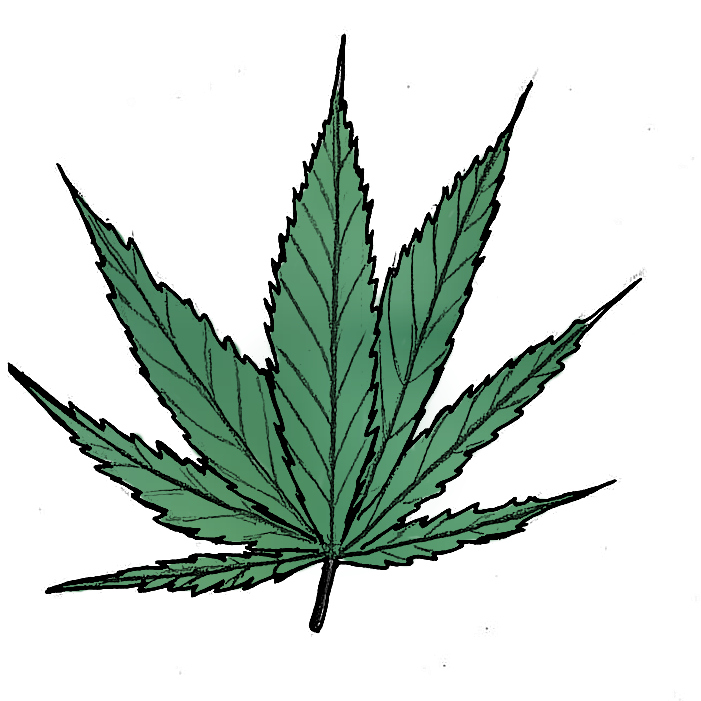Cannabis, or what the 1937 film Reefer Madness coined the “burning weed with its roots in hell,” is slated to become federally legal in Canada by the end of 2018. The potential risks and benefits of its use are still being disentangled from antiquated disinformation, individual studies, and hearsay.
While cannabis research is still in its infancy, the difference in perception of risk between the medical community and the public is substantial. Concerns regarding the increased likelihood of developing schizophrenia due to cannabis usage in healthy adults steers potential medical and recreational users away from the drug, but these worries are unjustified.
In an op-ed for The Independent, Ian Hamilton, a Lecturer in Mental Health in the Department of Health Sciences at the University of York, wrote that individuals who do not have a family history of schizophrenia and whose brains are fully developed—people aged 18 or more—have little to fear. A 2017 study in Psychol Med showed that the true potential risk concerning cannabis use and schizophrenia is limited to those who start young or those consume frequently in large doses. Furthermore, the effects of early and consistent cannabis usage are similar to that of other substances such as alcohol, and warrant similar regulation.
One particular statistic that’s commonly used popular media to steer youth away from cannabis use states that young cannabis-users are about twice as likely to develop schizophrenia than those who abstain from use. However, this is somewhat misleading. According to the National Institute of Mental Health, the baseline rate of developing schizophrenia is a little less than one in 100 in the general population. A study in World Psychiatry found that it’s about two in 100 in those who use cannabis regularly before they’re 18. Additionally, when potential confounds such as IQ, childhood behaviour, cigarette smoking, and others were included in the analyses, the risk was only 50 per cent higher than the controls, or 1.5 cases per 100 people.
If there was a substantial causal effect of cannabis usage on schizophrenia, one would expect countries with higher youth cannabis usage to have higher rates of schizophrenia. But Dr. David Bloom, medical director of the psychotic disorders program at the Douglas Mental Health University Institute and assistant professor of psychiatry at McGill, told The McGill Tribune that this does not appear to be the case.
“In Canada, where there is the some of the highest youth cannabis usage in the world […] the statistics are similar to other developed nations,” Bloom said.
Bloom clarified which groups should worry about the potential for developing schizophrenia from cannabis use.
“In general, the only group at real risk are those who have a penchant for early and heavy use,” Bloom said. “That’s what the epidemiology says. The big harm is [inhaling smoke]. If anything, use a vaporizer or edibles to avoid lung damage.”
Medical professionals such as psychiatrists, general physicians, and pain specialists have a particular interest in understanding this drug in both its medical and non-medical contexts. Like all drugs, the costs and benefits must be weighed against one another, and no drug can be used without consequences.
In the near future, when cannabis will be widely available around the corner at a dispensary, there won’t be a schizophrenia epidemic. Cannabis’ reputation as the “burning weed with its roots in hell,” is fiction.
“If we think about [cannabis] in terms of legalization, we have to think about it like alcohol.” Bloom said. “[With legalization], we have greater control of dosage and control of age of consumption,”










Further, only strains that are high in THC but low in CBD and some important terpenes trigger psychosis in those so predisposed. CBD is an anti-psychotic.
Salutations!
Agreed! It was a decades-long history of socio-toxic prohibition which created some new grey market(s) for “organized crime” to thrive on, e.g. in days when “Indian Hemp”/”Cannabis sativa L.” was a non-problem essentially. Which logically means that removing it from the “schedule” should free gifted/skilled artisan-cultivators to gradually offer a palette of products which ain’t THC-centric – but that’s only 1 part of the equation: consumers still need to realize their SMOKING habit translates as self-VILICATION feeding contaminated statistics in support of further predatory laws, even constitutionally-challenged, etc…
There’s an excellent illustration published on Leafly to be shared as basic REFERENCE, while bigot anti-cannabic prohibitioni$ts perpetuate propaganda based on “strict” control of the THC % level ALONE, e.g. in useless absolute values considering those open the door to additional vilification by defeating healthier consumption methods, on top of exposing users to unwanted amounts of vegetal substrate potentially contaminated with systemic pesticides, etc. While it’s the intrinsic nature of trichome glands to collect purified noble molecules early, at the genesis stage actually! Then comes associated ritual inviting problematic abuse.
Etc., etc.
https://www.leafly.com/news/cannabis-101/understanding-marijuana-thc-cbd-levels
Leafly: How to Help Consumers Understand the Amount of THC and CBD in Their Cannabis (2018-Mar-2)
https://uploads.disquscdn.com/images/16cddd542938f704b197f4f4a6336d457fa5e3592d60004328d4bf2415c83e78.png
https://www.leafly.com/news/cannabis-101/understanding-marijuana-thc-cbd-levels
Leafly: How to Help Consumers Understand the Amount of THC and CBD in Their Cannabis (2018-Mar-2)